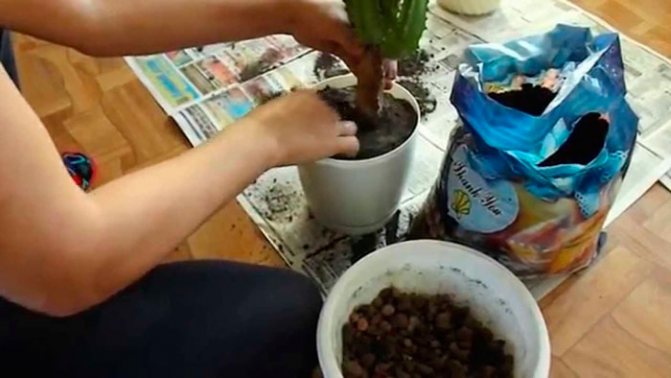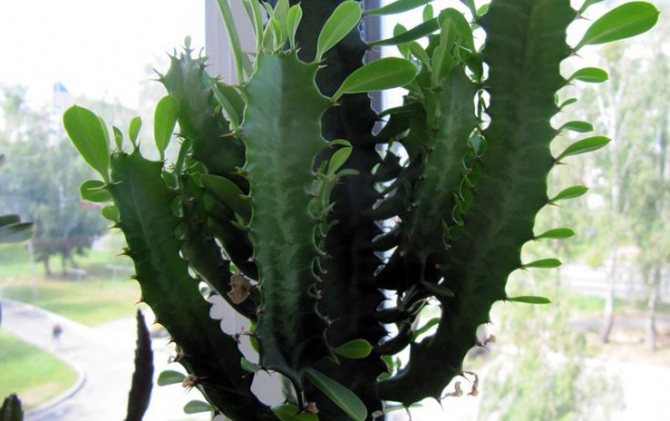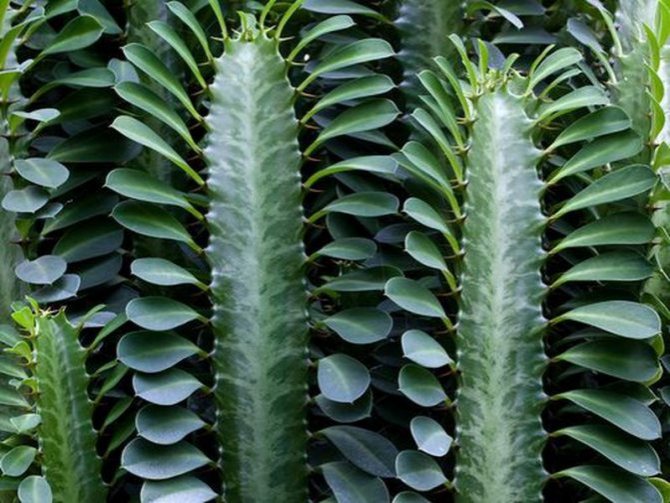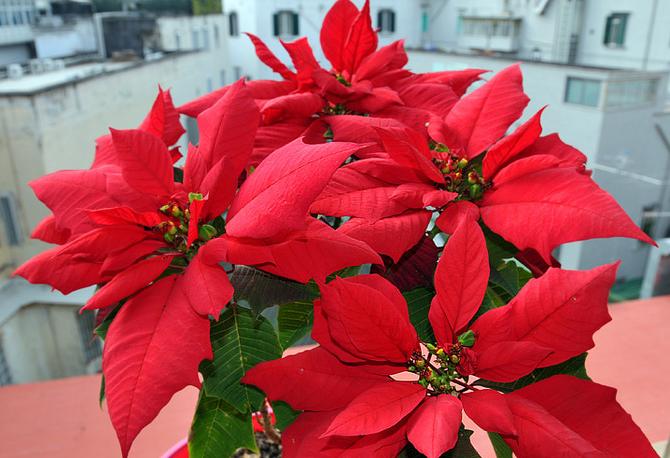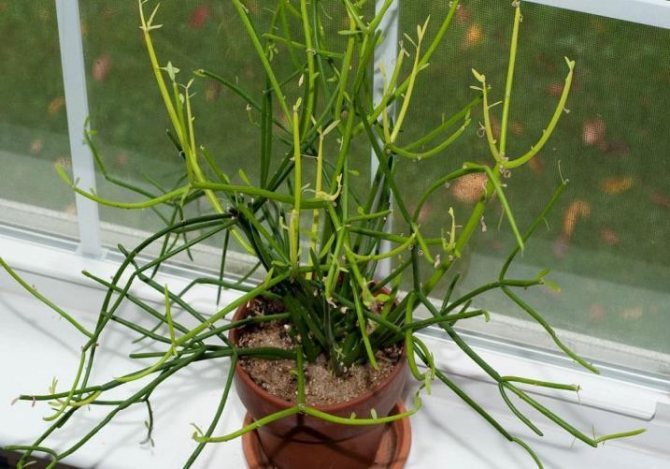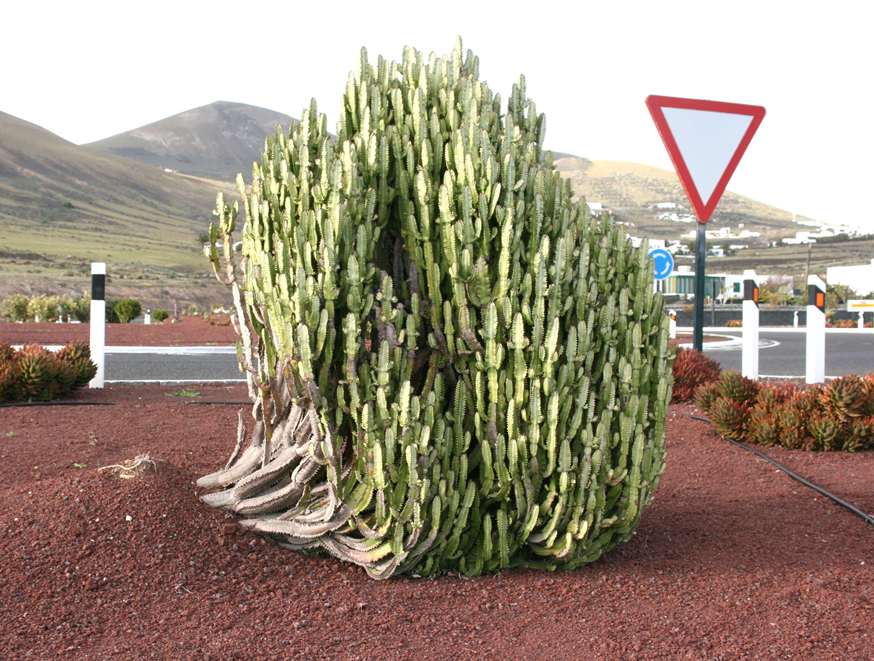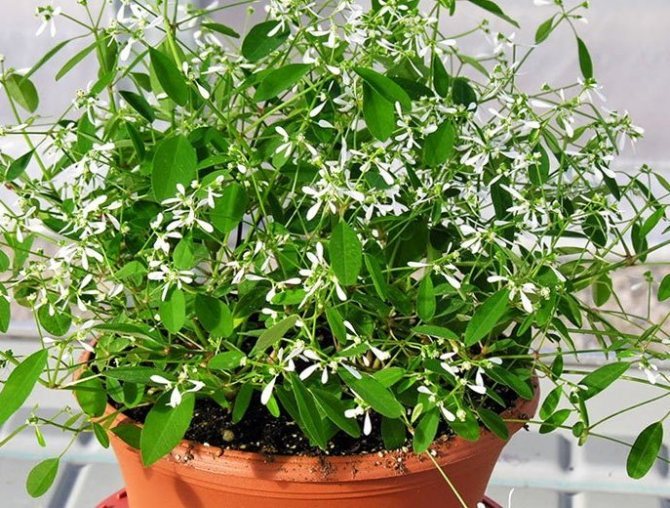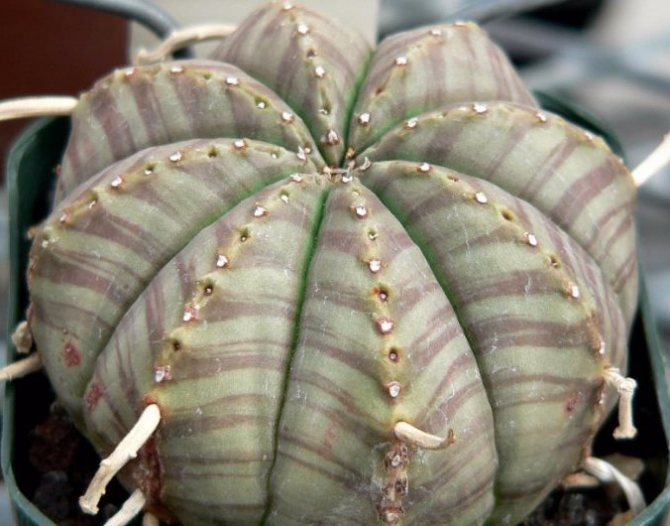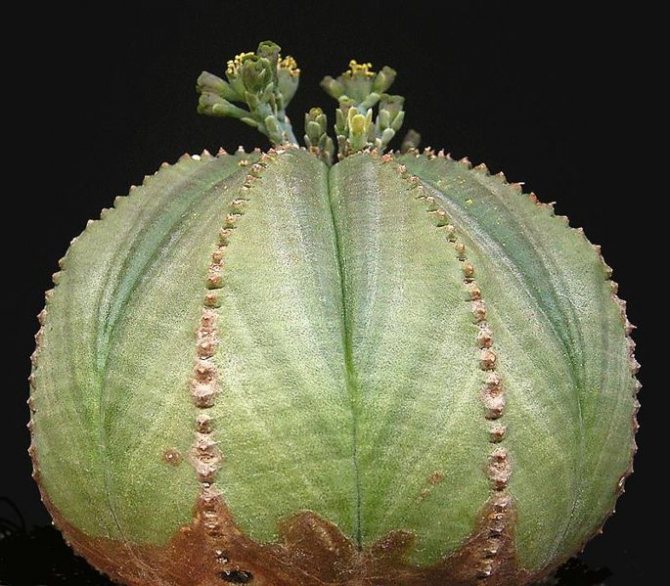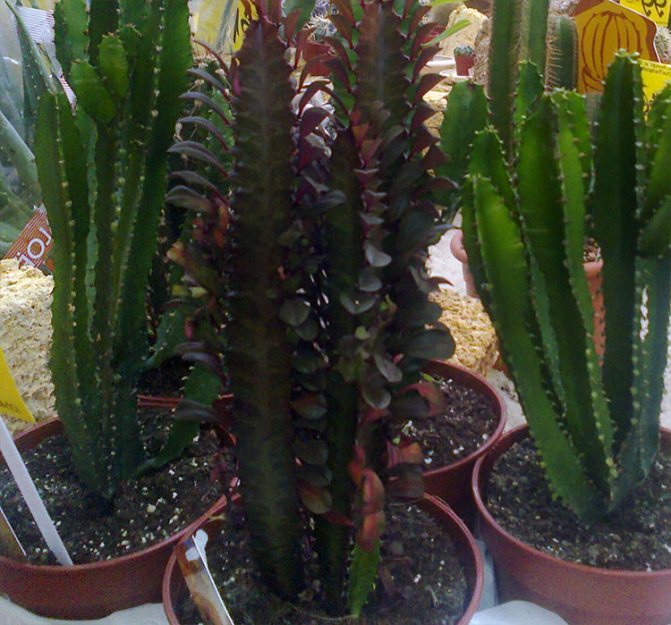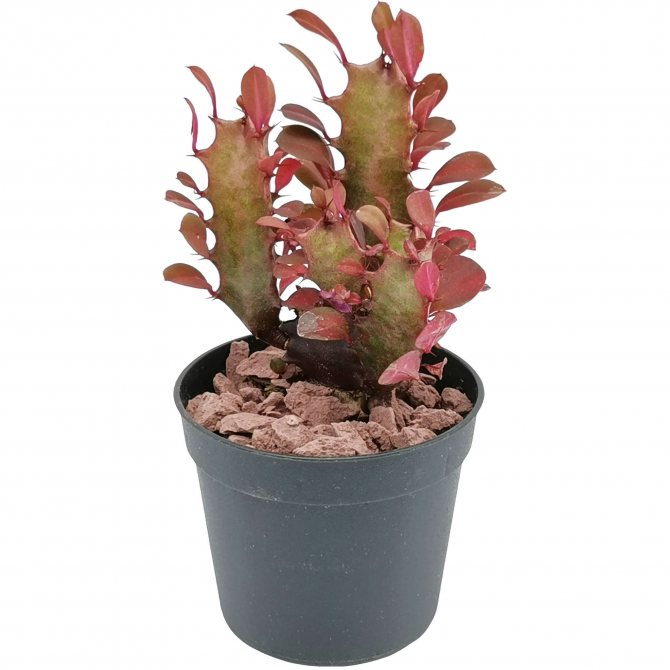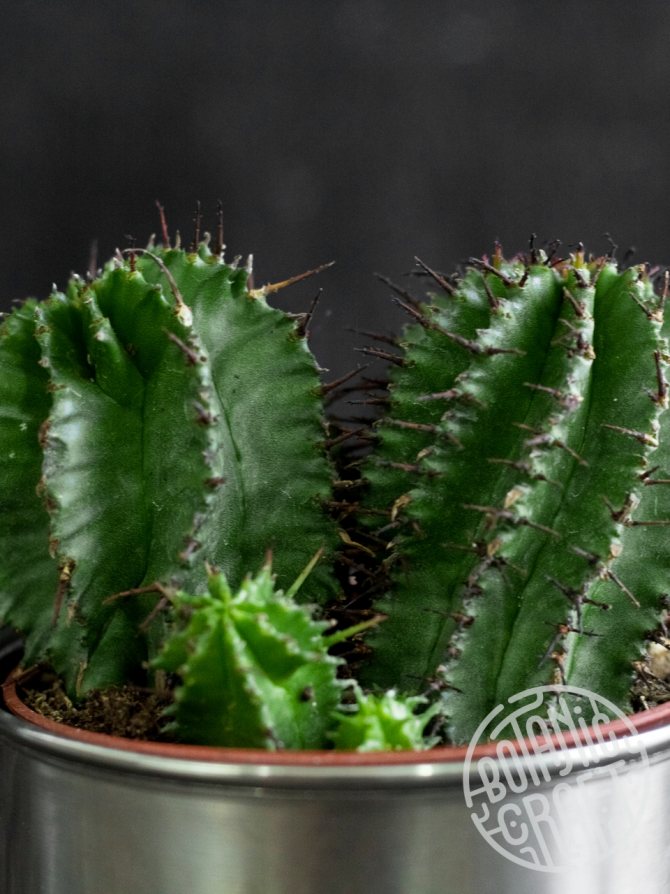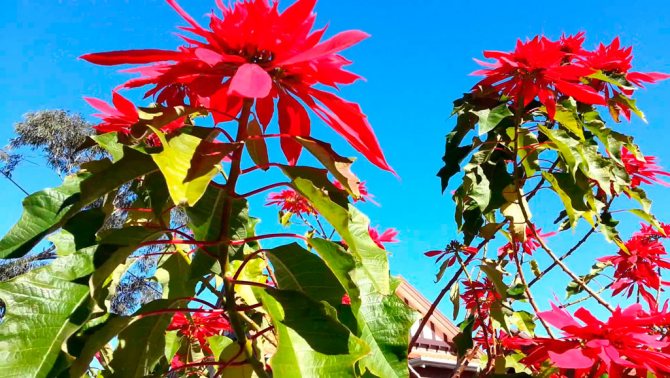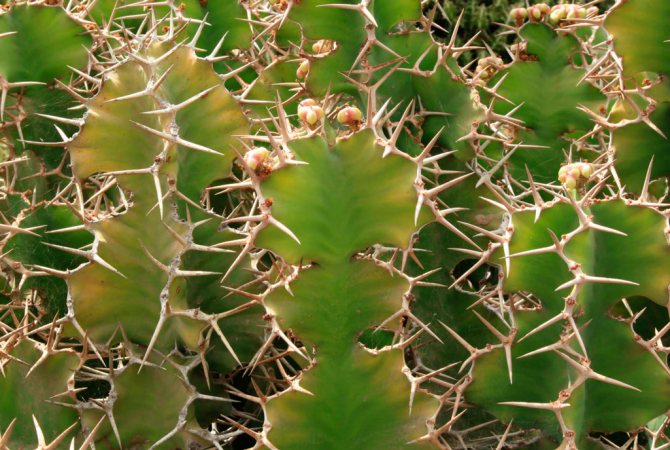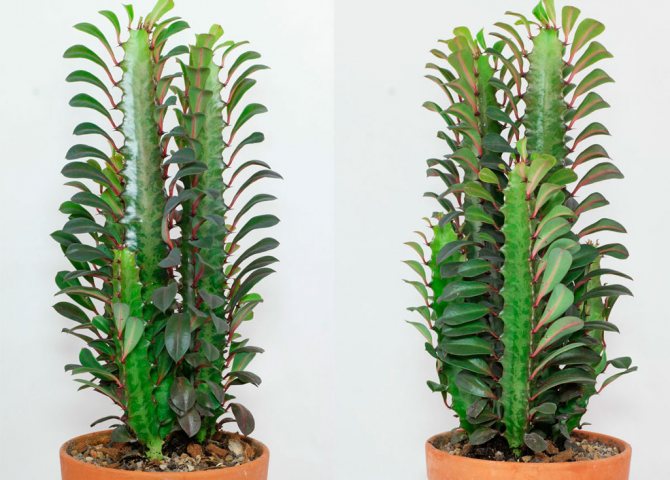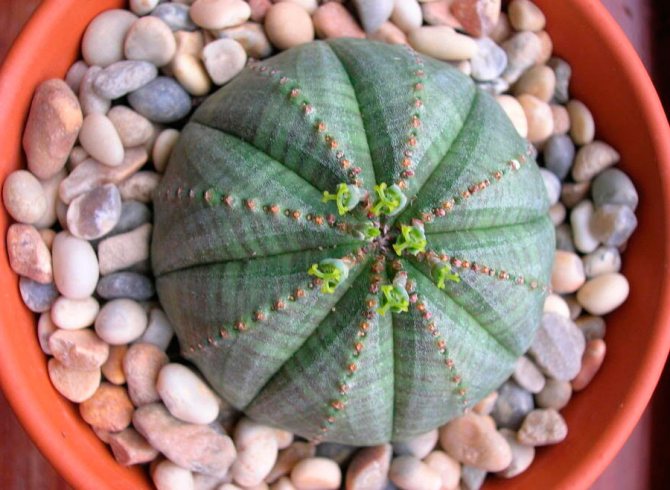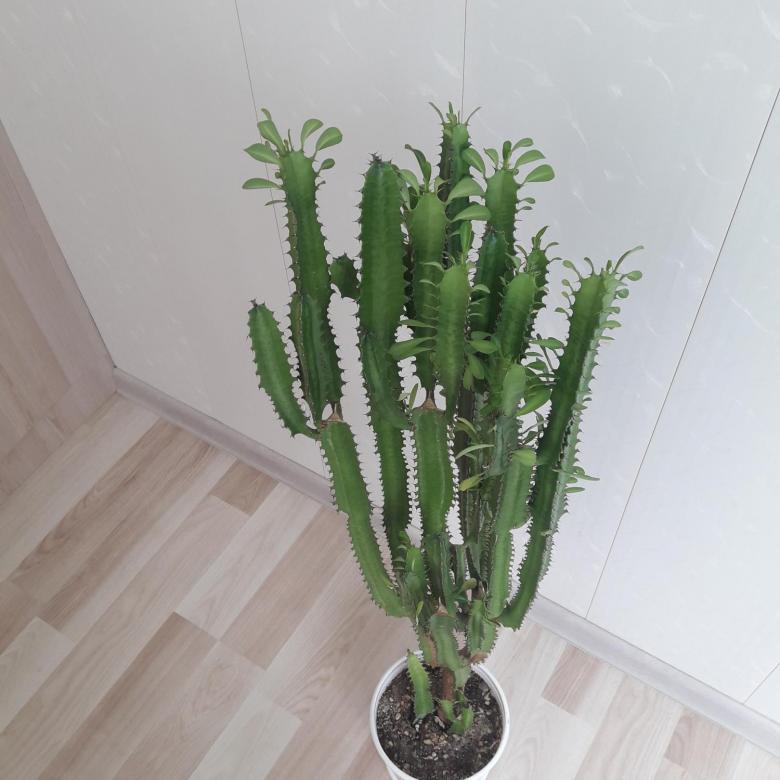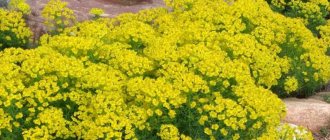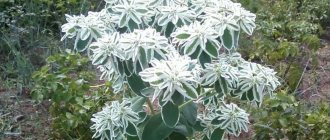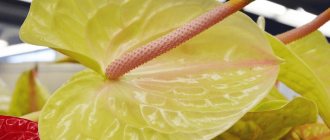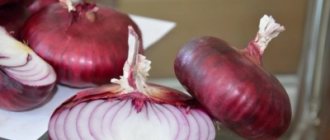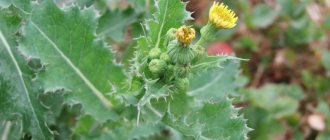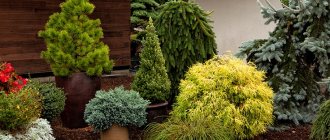Feature and Description
Trihedral spurge - perennial stem succulent of the Euphorbia family... The deserts of South Africa are considered the homeland of the succulent.
A large bushy plant with a small root system and high growth. Attention-grabbing powerful fleshy stem up to 6 cm in diameter with pronounced three sides. The flower is decorated with small brownish spines up to 5 mm long and lanceolate, oval leaves 3-5 cm in length, bent down. Indoor culture can reach two meters in height.

The plant is popular due to its exotic appearance and colossal hardiness to various adverse factors... Therefore, the triangular spurge retains its decorative effect for a long time, giving the interior a stylistic mystery.
General information
A large succulent plant native to Madagascar and subtropical regions of Africa. The stem is thick, fleshy, triangular. The well-defined ribs are covered with small spines. On the tops there are small oblong leaves. In natural nature, it grows on hills in the form of bizarre shrubs or trees.
In an apartment, an adult triangular spurge reaches 2-3 meters, often rests against the ceiling. Branched bush with many side shoots. Its shape is often compared to a candelabrum. There is a variety with a reddish stem and crimson leaves, it is considered a rare variety. Long-liver, throughout the entire time retains a high decorative effect.
Important! The plant is poisonous. The ingestion of milky juice into the gastrointestinal tract leads to severe poisoning. Local allergic reactions occur on the mucous membranes and skin. Transplanting, pruning of the plant is recommended to be carried out with gloves.
Home care
Successful cultivation presupposes periodic watering, dressing, as well as ensuring optimal temperature and humidity conditions. And knowing how to prune a plant will help ensure the correct development of the flower and make it more original. The task is not easy, but even beginner growers can handle it if they wish.
This video tells about triangular milkweed and the features of plant care.
Site selection and temperature conditions
Light is very important in the development of indoor plants. Therefore, when growing triangular euphorbia at home, it is better to put it on windows on the south or southwest side... With a lack of lighting, the culture loses its decorative properties.
Advice! Triangular spurge is unpretentious to temperature extremes. Feels comfortable in the summer months at temperatures from 20 to 25 ° C, and in the autumn and winter, at rest - 15-18 ° C.
Watering and humidity
In summer, water in moderation, about twice a week, using warm, soft water. During the growth in pots, the soil should not dry out. The main thing, prevent it from waterloggingbecause it will slow down the pace of development. At the time of the growing season, high-quality watering is important. In winter, the amount of irrigation should be reduced, and if kept in cool conditions, it is better to stop.
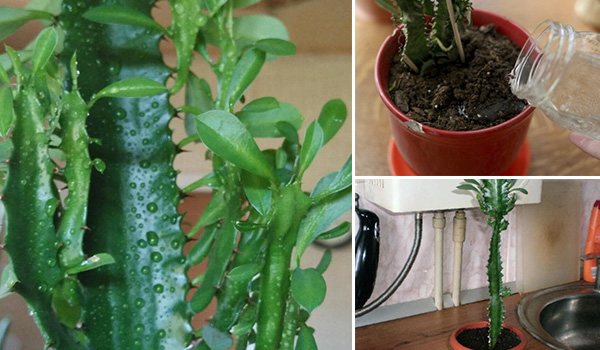

Air humidity for milkweed does not matter, but you can systematically arrange flowers for spraying or a hygienic shower.
Soil and transplant
Young specimens should be replanted annually, adults - when the root system takes up the entire space of the pot. The transplant should be carried out in the spring, at the beginning of the growing season.... Each new pot should be 3-4 cm larger than the previous one, and the soil should be breathable and well-drained. You can use ready-made soil for succulents with a neutral reaction or make a soil mixture yourself, taking in the same proportions turf, leafy soil, sand and peat.
This video shows milkweed transplant and pruning.
When transplanting triangular milkweed, it is important to adhere to the following procedure:
- Put a drainage layer on the bottom of the pot, on top of which sprinkle with soil 4-5 cm thick.
- Remove the plant from the old flowerpot and clean the roots of soil residues.
- Place in a new container and sprinkle gently with soil, being careful not to damage the young roots.
- Tamp lightly, water and put in place.
Important! Adult specimens need to be replanted every 3-5 years, while the topsoil must be renewed annually.
Fertilizer
To obtain luxurious specimens with a beautiful crown, triangular euphorbia is needed in sufficient quantities provide essential nutrients... You need to feed it in spring and summer 2 times a week with fertilizers for succulents or cacti. In autumn and winter, feeding should be stopped. Procedure to carry out after watering into wet ground.


Pruning
To maintain the decorative appearance of triangular milkweed you need to trim... As a result, the bush becomes more luxuriant, grows more actively and maintains the required height. To do this, cut off the tops with a sharp knife, after which soak places of cuts well with a napkinso that the juice that stands out does not leave smudges on the trunk. The cut tops can be used for propagation as cuttings.
This video shows how to properly prune the triangular spurge and tells about its rooting.
Propagation of triangular milkweed
Growing indoor plants is much more interesting than just buying them, because in the process of their development you can gain new experience and increase the level of knowledge and skills... The question arises before flower growers, how to propagate trihedral euphorbia?
To do this, you can use side cuttings, which need to be cut in early spring. In order for them to take root well, and as a result, a powerful bush turned out, you need to know how to root cuttings correctly... The procedure includes several stages:
- Cut the cuttings from the upper shoots, 10 cm in size and air dry for 2-3 days. Sprinkle the slices activated carbon to prevent rotting.
- In a pot, pour fertile soil on the drainage layer and carefully plant the cuttings.
- Drizzle liberally and place in lightly shaded area, protected from drafts.
If the procedure is performed correctly, the rooting of the cuttings of the triangular milkweed occurs after a few weeks. Then you can transplant it into a permanent flowerpot.
There is another way how to root a stalk... They can be put in water, but there is a high risk of decay.


Pests
Pests rarely attack euphorbia due to its poisonous juice, but sometimes it happens. You can determine that a plant has been attacked by the following signs:
- aphids - black or green small insects, they are very clearly visible on the leaves;
- a spider mite betrays its presence by the presence of a cobweb;
- mealybug covers the plant with a white bloom.
If measures are not taken in a timely manner, the plant can be significantly damaged, and in the worst case, it will die.You can use commercial insecticides or spray the leaves and stems with an aqueous solution of laundry soap.
Diseases and pests of triangular milkweed
Growing a crop at home can be accompanied by all sorts of difficulties that appear mainly due to improper care... More common problems include disease and pest damage.
Diseases
Under unfavorable conditions for keeping milkweed triangular, problems such as:
- shedding foliage, which provokes excess moisture;
- yellowing of the leaves, which causes a lack or excess of fertilizing;
- the presence of brown growths on the stems from the direct rays of the sun;
- stretching stems with a lack of sunlight;
- slowdown in growth, when the pot size is not suitable for the plant;
- rotting shoots, accompanied by an unpleasant odor, arising from an excess of moisture and infection during pruning.
Advice! All these problems are easily solved by carrying out all the necessary measures for the care of the triangular milkweed. The plant quickly recovers, and pleases with its healthy and spectacular appearance.
Pests


Trihedral spurge is rarely attacked by pests, since the poisonous juice scares away uninvited guests. To common includes aphids, whiteflies, mealybugs... Against these insects, it is necessary to use acaricides, insecticides. It is important to detect parasites in a timely manner and take appropriate action.
Attention! Pest control involves both the use of chemical measures and well-organized care that will reduce the risk of the appearance and development of parasites.
Diseases
Euphorbia is a triangular plant unpretentious, however, with improper care, it can also have problems:
- leaves and stem turn yellow - excess or lack of trace elements in the soil;
- brown spots appear, resembling burns - too long exposure to direct sunlight;
- leaves fall - insufficient or excessive watering, poor drainage. If there is too much excess moisture, rotting of the trunk from the bottom can be observed.
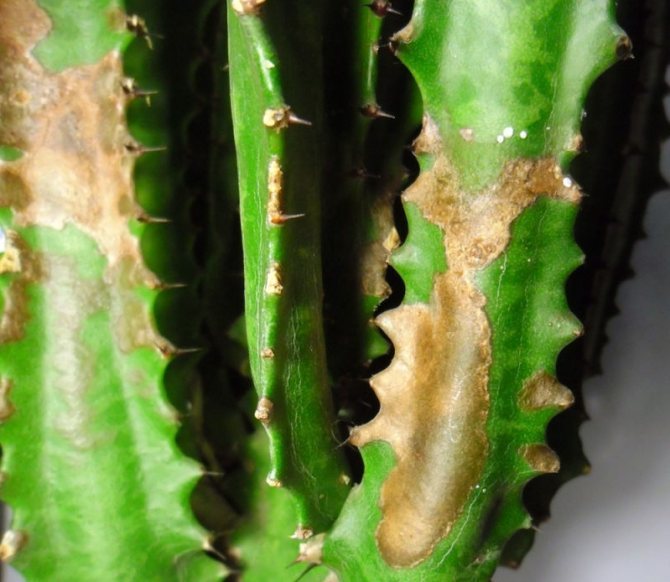

Burns on the stem
You can get rid of the listed problems by eliminating the cause of their occurrence.
Signs associated with triangular milkweed
There are curious floral signs and superstitions associated with triangular milkweed. If you believe folk signs, then the plant is endowed with high energy strength, and its thorns are able to protect the home from any negativity and create a pleasant, friendly atmosphere in the house.
Feng Shui experts recommend placing the triangular euphorbia as close to the front door as possible. It also works great and for the kitchen, as it has an extraordinary property - get rid of an unpleasant odor. You can not keep a poisonous cactus in the recreation area and bedroom, since the plant has a negative effect on sex life and disrupts sleep.
The benefits of triangular milkweed
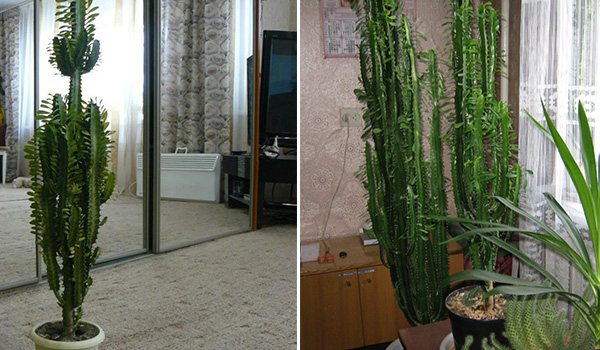

The indoor plant not only decorates the interior, but also has such useful properties as:
- filters and cleans hazardous substances in the air;
- is a neutralizer of unpleasant odors in the house, especially kitchen areas;
- absorb electromagnetic radiation, so a flower located near a TV or computer is not only will create a great mood, set you in a working mood, but also protects against negative influences.
In folk medicine, a tincture of crushed parts of a plant is used as a bath for treating fungal skin infections, warts, eczema and lichen... The roots of the triangular milkweed are used for problems associated with the digestive system. To do this, the raw materials need to be boiled and drunk 1 tablespoon before meals.
Caution! It is important to consult a specialist before using a flower for treatment. Unfortunately, scientists have not yet fully studied the benefits and harms of trihedral milkweed.
Triangular milkweed harm
The flower is considered poisonous due to the high content of milky juice, which, when it gets on the skin and mucous membranes causes a burn, and into the stomach - poisoning... These symptoms are provoked by the powerful toxins euphorbin and saponin in the plant, which have an irritating and cauterizing effect.


Therefore, the question arises whether it is possible to keep the trihedral spurge at home? The answer is yes, only important wear gloves when caring for these flowers, after all the manipulations, wash your hands well, and do not allow the poisonous juice to get on the skin and mucous membranes.
It is also necessary to take measures to ensure so that children do not come into contact with the plant and do not prepare medicinal preparations at home.
If all safety measures are observed, the benefits of triangular milkweed will many times exceed the harm that can be caused by this unique culture.
Triangular spurge has taken root in our apartments and houses for a long time. Knowing the secrets of growing and the peculiarities of caring for a plant, you can grow a large and beautiful decoration of any room, which will be delight with freshness, beauty, giving the interior sophistication, and will also respond with positive energy that keeps the house from any adversity.
Features of care in winter, dormant period
Euphorbia flower - types and popular varieties
In winter, plants are provided with rest. Milkweed triangular care at home during this period is not required, it is enough to leave it in a cool room. Watering euphorbia is carried out when the soil is dry by 3 cm.
In winter, the stems do not lose their decorative effect, but euphorbia hardly grows. From the second half of October, every day from 6 pm to 8 am, it is recommended to keep the pots in the dark. You can cover plants with materials that do not allow light to pass through.

